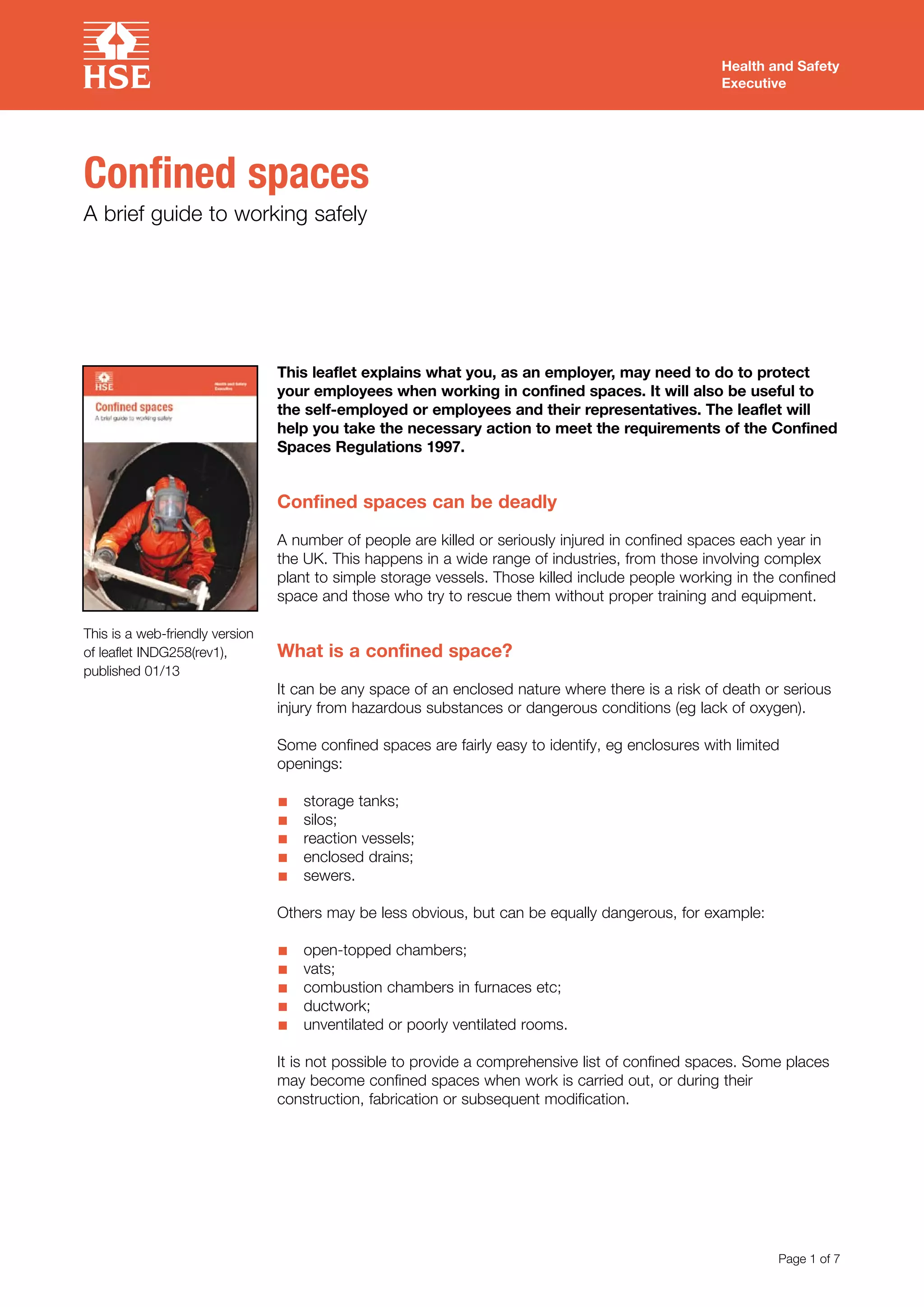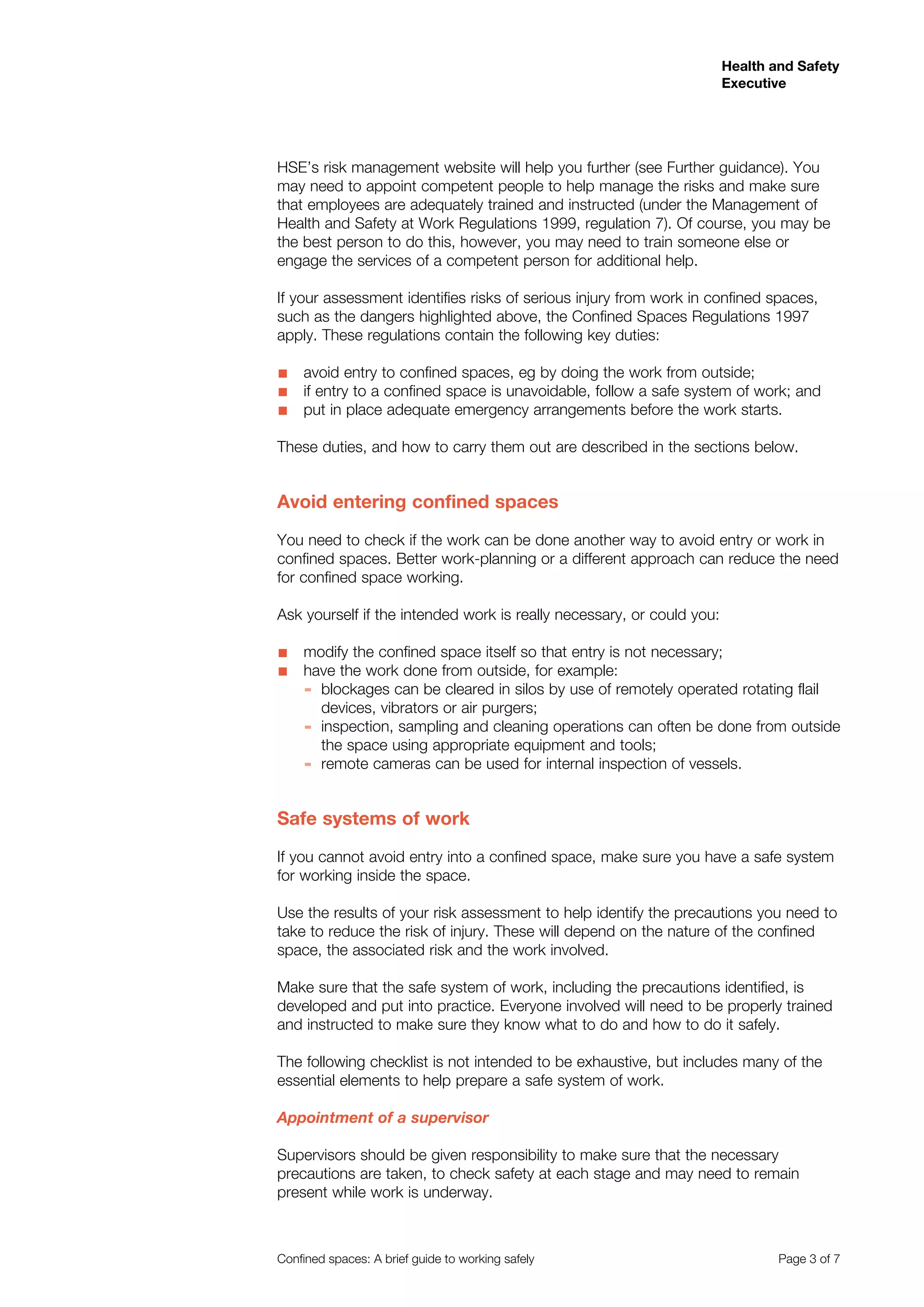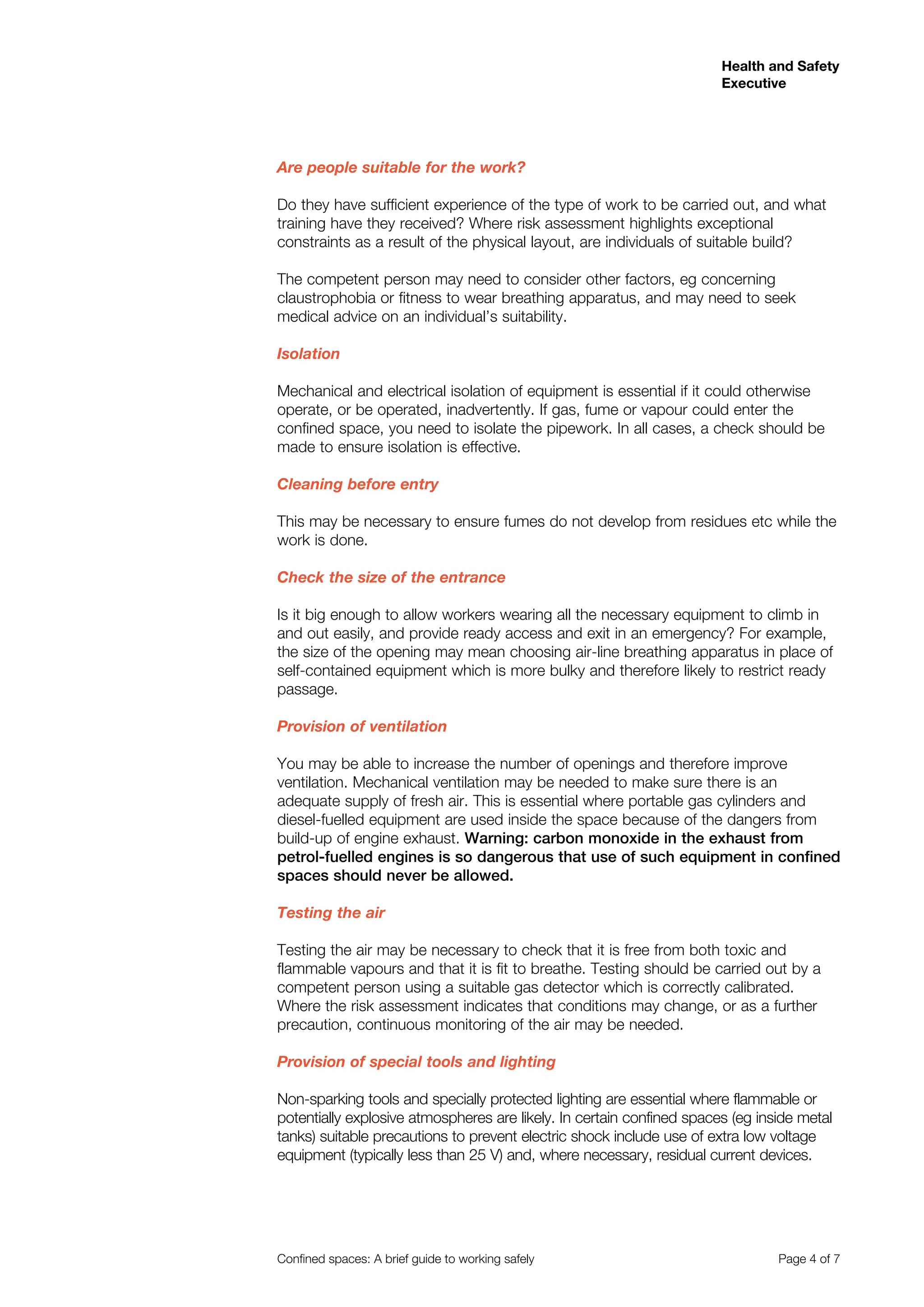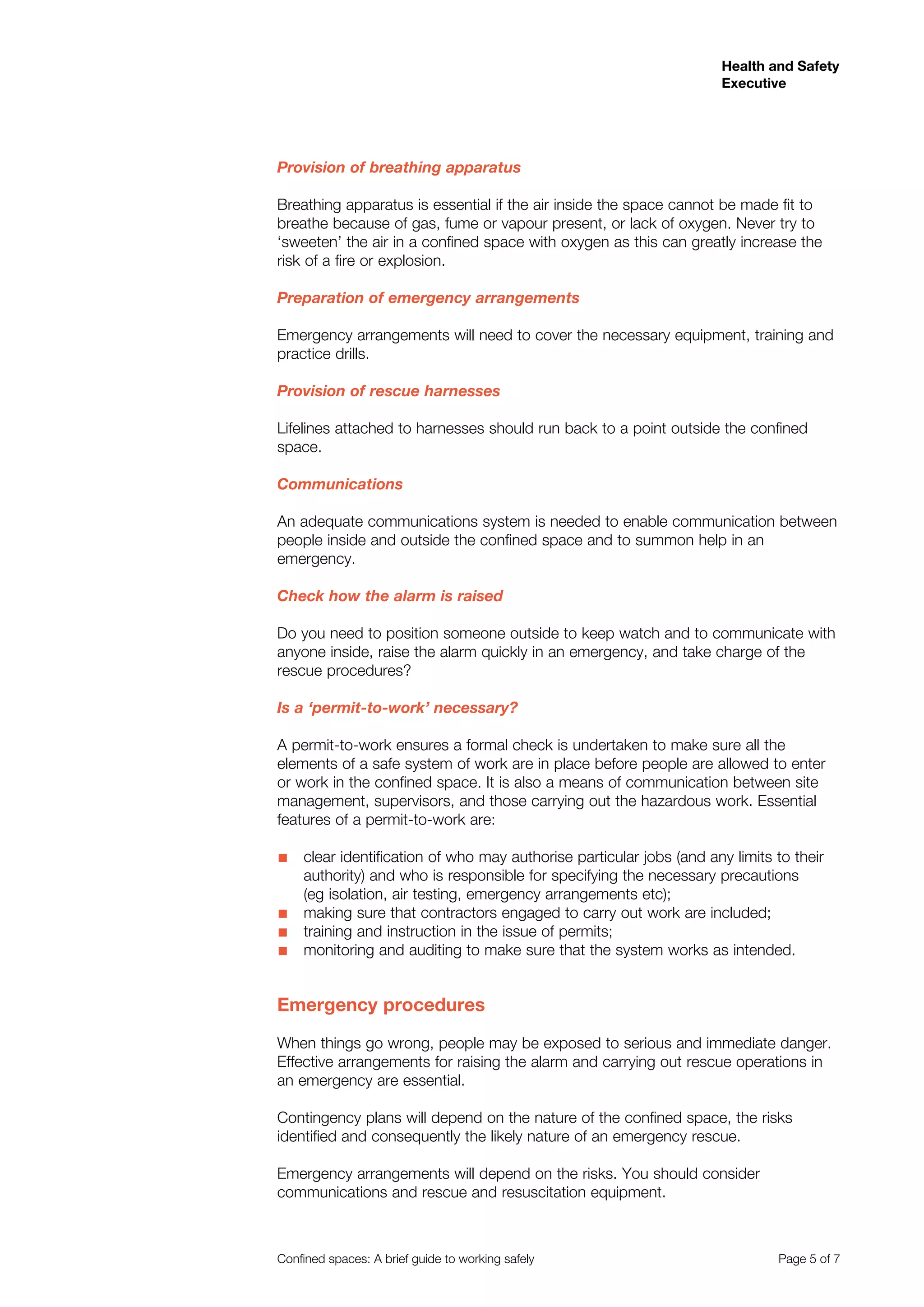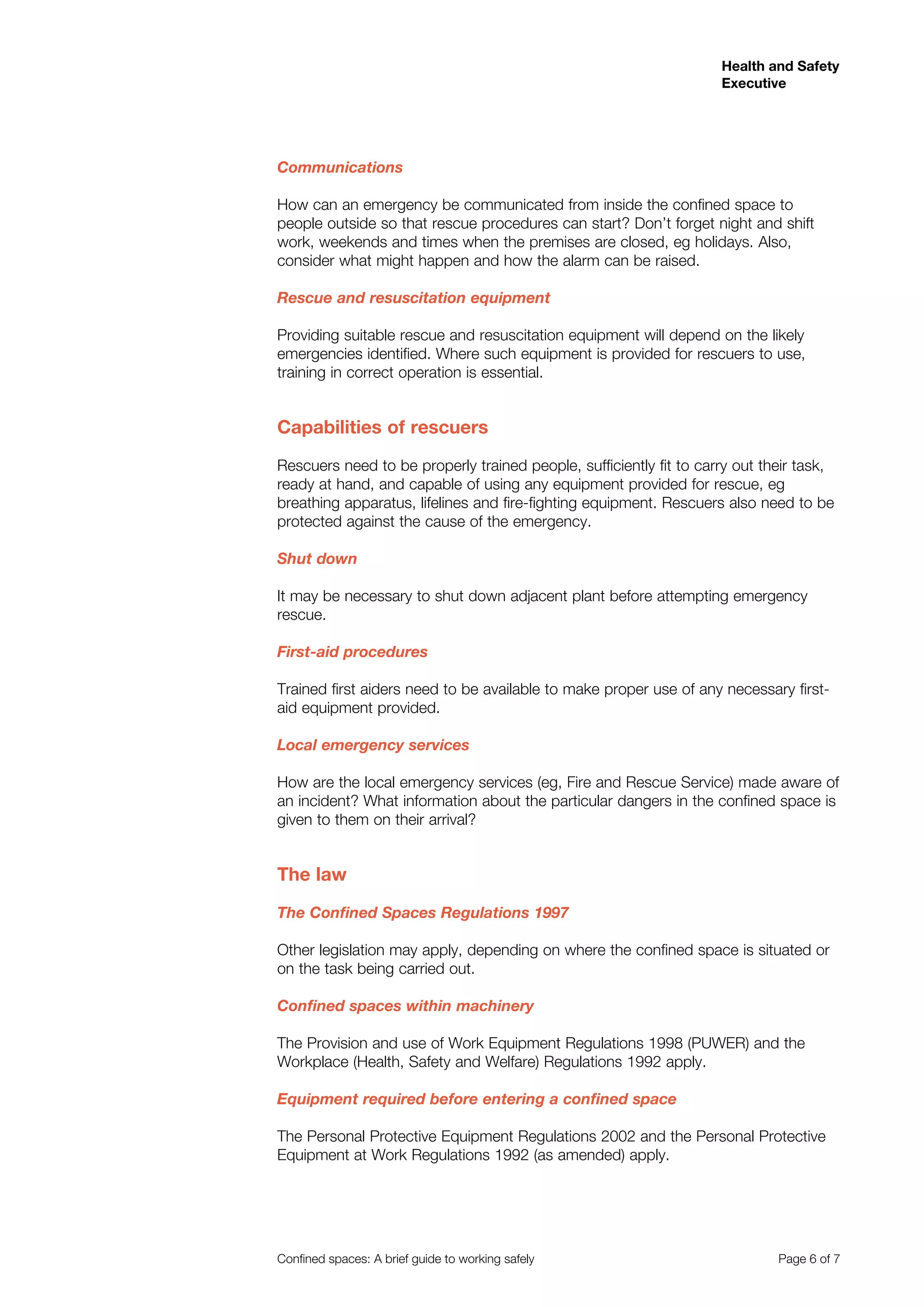This document provides guidance on working safely in confined spaces and summarizes the key requirements of the Confined Spaces Regulations 1997. It outlines potential dangers in confined spaces like lack of oxygen, poisonous gases, and fires or explosions. It also describes what constitutes a confined space and emphasizes avoiding entry if possible. For necessary entry, it lists essential elements of a safe system of work including permits, isolation, ventilation, air testing, emergency procedures, communication, rescue equipment and training.
